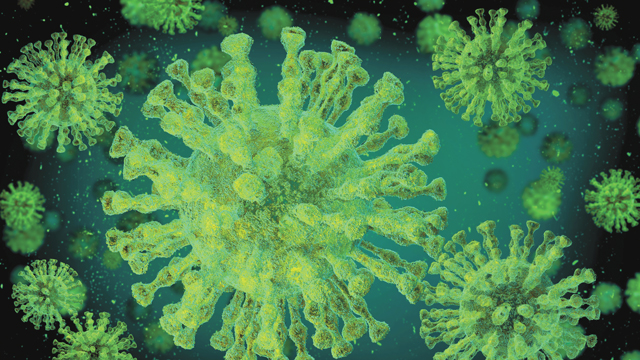The spread of COVID-19 has turned our daily lives upside down, leaving us with a terrible feeling of uncertainty – made worse by misinformation that seems to spread even faster than the virus.
Explaining social distancing and stay-at-home orders to children is already hard. Talking about the virus behind it all can be even more challenging, especially because there are so many new terms being used that even most adults don’t fully understand.
Let’s explore some of the terms you may have heard over the past few months.
Novel Coronavirus
Novel coronavirus is a term that is often used interchangeably with COVID-19, but the two things are actually a little different. When we say novel coronavirus, the word “novel” means new. Coronaviruses are a diverse group of viruses, many of which we know well; for example, the common cold is a mild type of coronavirus, and SARS (severe acute respiratory syndrome) is a much more dangerous type.
The current coronavirus was dubbed novel when it was first identified in December 2019 in Wuhan, China. It’s a very contagious virus so it jumped quickly from person to person in Wuhan. And because trains, cruise ships, and airplanes make travel so fast and easy, it didn’t take long for the novel coronavirus to spread from Wuhan to Japan, South Korea, Italy, France, Spain, the United States, and beyond.
Technically, the name of the virus is “severe acute respiratory syndrome coronavirus 2” (SARS-CoV-2), but the term novel coronavirus proved much easier for the public to remember. As the pandemic spread westward, the term novel coronavirus quickly made its way into the English lexicon.
Sidenote: A corona is a halo, such as the glow you can sometimes see around the sun and moon. The name coronavirus was chosen because under a microscope, each virion (particle of the virus) is surrounded by this type of halo, or corona.
COVID-19
So what’s the difference between novel coronavirus and COVID-19? One causes the other. The official name of the current pandemic, according to the World Health Organization (WHO), is coronavirus disease 2019. That has been shortened to the acronym COVID-19 (COrona VIrus Disease 2019).
Viruses are microscopic parasites and they are named based on anything from their place or animal of origin, the scientist who discovered it, or even the shape or color. COVID-19 got its name from its genetic structure (remember, the current virus is technically called severe acute respiratory syndrome coronavirus 2 or SARS-CoV-2 for short).
Diseases may be caused by viruses, and they are intentionally given simpler names to facilitate discussion and information in the public. The World Health Organization has named the current pandemic coronavirus disease 2019 or (COVID-19 for short) because it is the disease spread by the novel coronavirus SARS-CoV-2.
The name COVID-19 has taken hold as what most people think of as the virus, but in reality, COVID-19 is the disease and SARS-CoV-2 is the virus that causes it.
Flattening the curve
The term flatten the curve isn’t new, but it has been trending lately. Drew Harris, a population health analyst at Thomas Jefferson University in Pennsylvania used the term to describe two different potential COVID-19 scenarios. The first was a steep peak in cases in the short-term, which would overwhelm healthcare facilities and medical supplies. The second was a more gradual increase in cases – a flatter, gentler curve that shows fewer people infected immediately.
When we talk about flattening the curve, we mean doing everything we can to slow the spread of COVID-19. Through social distancing, staying at home, and frequent handwashing, we can help ensure that the number of immediate cases doesn’t exceed the capacity of our healthcare system. That flattened curve is the goal.
Herd immunity
Herd immunity is also not a new term. In essence, it means that a group has many individuals who are immune to a disease, usually either because they have been vaccinated or because they have already been exposed and have developed an internal immunity. Once a group has herd immunity, an infected person who enters the group can’t spread the disease easily because so many members are immune – even though not all of them are.
The number of people who have to be immune depends on how contagious the disease is. For example, 93 to 95 percent of the population must be vaccinated against measles to ensure that a single person with measles can’t spread it. When the vaccination rate drops below that range, a single measles case can easily turn into an outbreak.
In the case of COVID-19, however, we don’t yet know enough about the virus to determine whether the exposure would impact immunity.
Immunocompromised
Immunocompromised means that the immune system isn’t working properly. Since we all depend on our immune systems to fight off diseases like COVID-19, a person who is immunocompromised is at risk of becoming seriously ill if he contracts the virus.
Some of the conditions that cause a person to be immunocompromised include cancer treatment, organ transplant, and smoking. Many medications (such as corticosteroids when used on a long-term basis) also weaken the immune system. People with poorly-controlled HIV or AIDs may be immunocompromised, but people living with HIV or AIDS who are on effective antiretroviral treatment (ART) are not considered to be immunocompromised or at higher risk for COVID-19.
It is not clear whether immunocompromised people are more likely to get COVID-19, but we do know that if they get it, they are likely to become much more seriously ill than others. Immunocompromised people are not the only ones at risk for serious symptoms, however. Other high-risk populations include anyone with chronic lung disease, asthma, serious heart conditions, diabetes, chronic kidney disease and liver disease – whether or not they are immunocompromised. Everyone over the age of sixty-five and anyone living in a nursing home or long-term care facility is also at high risk, even without any other underlying conditions.
In times of uncertainty, misinformation spreads fast. Do your part to stop the spread of misinformation by getting your facts from trusted public health sources. Do your fact-checking at CDC.gov and find Virginia-specific information at VDH.virginia.gov.





